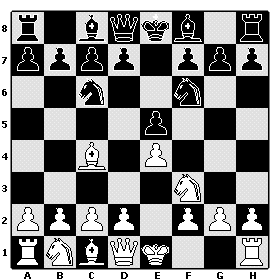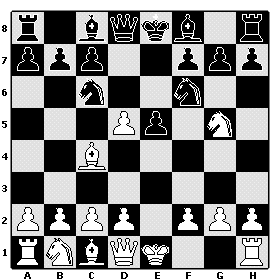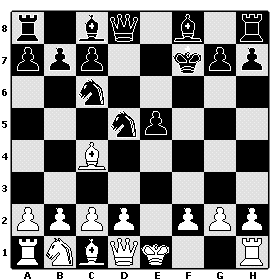The Fried Liver is an attack that has been known to win for White since the 16th century!

After 1.e4 e5 2.Nf3 Nc6 3.Bc4 Nf6 (diagram), White plays 4.Ng5. What does this threaten? Normally, moving a piece twice in the opening is not a good idea, because you could make better use of your move by developing another piece. But, in this case, White's attack on the f7-Pawn has to be taken seriously, because if he can take it with Nxf7, he'll fork Black's Queen and Rook. Black can't defend with Qe7, either, because White would still play Bxf7, and the Queen is too valuable to trade for White's Bishop and Knight. So Black has to play 4...d5, and the reply is 5.exd5.

Here, Black should play 5...Na5, attacking the Bishop. This sacrifices the Pawn and it's very risky, but it leads to an exciting game. Instead, Black plays 5...Nxd5, thinking that he is defending well. But White has other ideas. 6.Nxf7! This sacrifice leads to the Fried Liver Attack, and it's very powerful. Black has to play 6...Kxf7, to regain his Pawn.

White now plays 7.Qf3+, and Black has to defend his d5-Knight again with 7...Ke6. But White's next move attacks it again. 8.Nf3! Now Black has two options: Nb4, and Ne7, because any other move loses the pinned Knight. Black choses the more aggressive one: 8...Nb4. Now, it looks like Black is winning. He's two points ahead, and he's theatening to take the c2-Pawn, which forks White's King and Rook.

But White still has good moves. I would castle here, followed by playing 9.d4, 10.Re1, and 11.Bf4. Or, you can play 9.a3, and if Black plays 9...Nxc2+, then 10.Kd1, and Black wouldn't be able take the a1-Rook, because the pinned d5-Knight would need defense. White has a strong attack here, and you should play though the different variations to find a line that suits you.